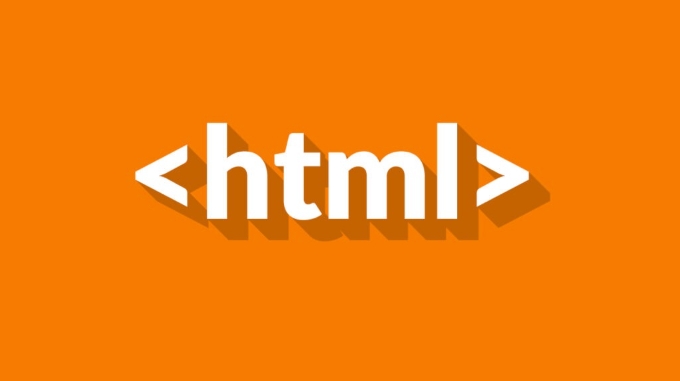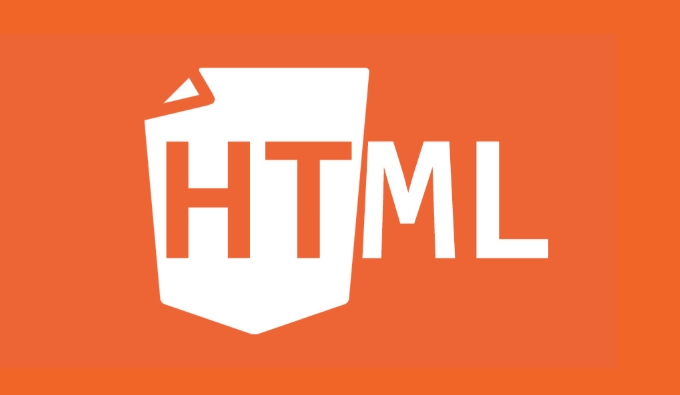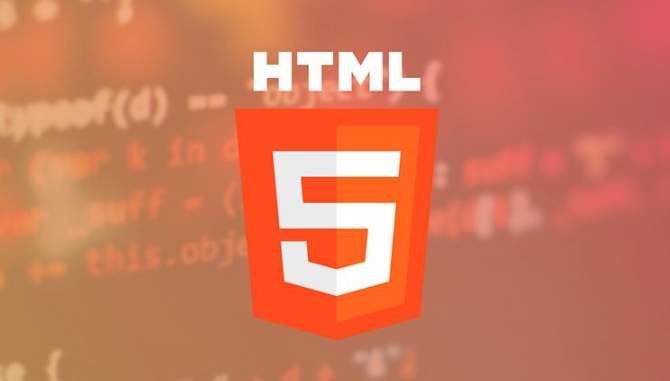What are the key differences between html and XHTML standards?
Jul 04, 2025 am 03:01 AMThe main differences between HTML and XHTML are syntax strictness, file type processing and error handling methods. HTML is more flexible, allowing tags to be mixed with upper and lowercase, tags can not be closed, and attribute values ??do not require quotation marks; while XHTML follows XML rules, requiring all tags to be lowercase, must be closed, and attribute values ??need to be quoted. HTML files are usually transferred in the text/html MIME type and are parsed using an HTML parser; XHTML should be transferred in the application/xhtml xml type, otherwise it may lead to parsing errors. HTML is tolerant of errors, and the browser will try its best to render; XHTML will stop rendering and report an error due to syntax errors. Although XHTML was once regarded as the future direction, HTML5 has become mainstream today. It combines the advantages of HTML and XHTML, while avoiding the forced strict XML syntax, which is more suitable for general web development.

HTML and XHTML are both markup languages ??used for structuring web content, but they have distinct rules and purposes that affect how developers write and maintain code. The main difference lies in their syntax and parsing requirements — HTML is more forgiving, while XHTML is stricter and follow XML rules.

Syntax Strictness
One of the most noticeable differences is how strict each format is about syntax.

-
<li> HTML allows for more flexibility. Tags can be written in uppercase or lowercase, some tags can be left unclosed (like
<li> or <p></p> ), and attribute values ??don't always need quotes.
<li> XHTML , on the other hand, requires well-formed documents. All tags must be lowercase, every opened tag must be closed properly (eg, <br> instead of <br> ), and all attributes must have quotes around their values.
This strictness makes XHTML documents easier to process with XML tools but also adds more overhead when writing or maintaining code manually.
File Type and MIME Handling
Another key distinction is how browsers handle files based on their type.

-
<li> HTML files are usually served with the
text/html MIME type, which means browsers will parse them using an HTML parser.
<li> XHTML should be served as application/xhtml xml . If you serve XHTML with the HTML MIME type, older browsers might not interpret it correctly, leading to rendering issues or broken pages.
In practice, this means that if you're using XHTML, your server configuration needs to support the correct MIME type — something many developers prefer to avoid due to compatibility concerns.
Error Handling
How errors are handled is another practical difference that affects debugging.
-
<li> In HTML , browsers tend to be lenient. Even if your markup has errors, browsers often try to render the page anyway. This can hide problems and make debugging trickier.
<li> With XHTML , any syntax error usually causes the browser to stop rendering and display an error message. While this can be frustrating during development, it helps catch issues early and ensures cleaner code overall.
Tooling and Usage Today
While XHTML was once promoted as the future of web markup, its adoption never fully took off.
-
<li> Most modern websites use HTML5 , which blends the best parts of HTML and XHTML without enforcing XML's strict syntax.
<li> XHTML is still relevant in specific environments like embedded systems or applications that require XML processing, but for general web development, it's largely been replaced by HTML5 with stricter coding practices encouraged through linters and validators.
So unless you're working in a context that specifically needs XML parsing, sticking with HTML5 and writing clean, semantic markup is usually the better choice.
Basically that's it.
The above is the detailed content of What are the key differences between html and XHTML standards?. For more information, please follow other related articles on the PHP Chinese website!

Hot AI Tools

Undress AI Tool
Undress images for free

Undresser.AI Undress
AI-powered app for creating realistic nude photos

AI Clothes Remover
Online AI tool for removing clothes from photos.

Clothoff.io
AI clothes remover

Video Face Swap
Swap faces in any video effortlessly with our completely free AI face swap tool!

Hot Article

Hot Tools

Notepad++7.3.1
Easy-to-use and free code editor

SublimeText3 Chinese version
Chinese version, very easy to use

Zend Studio 13.0.1
Powerful PHP integrated development environment

Dreamweaver CS6
Visual web development tools

SublimeText3 Mac version
God-level code editing software (SublimeText3)

Hot Topics
 How do I embed PHP code in an HTML file?
Jun 22, 2025 am 01:00 AM
How do I embed PHP code in an HTML file?
Jun 22, 2025 am 01:00 AM
You can embed PHP code into HTML files, but make sure that the file has an extension of .php so that the server can parse it correctly. Use standard tags to wrap PHP code, insert dynamic content anywhere in HTML. In addition, you can switch PHP and HTML multiple times in the same file to realize dynamic functions such as conditional rendering. Be sure to pay attention to the server configuration and syntax correctness to avoid problems caused by short labels, quotation mark errors or omitted end labels.
 How do I minimize the size of HTML files?
Jun 24, 2025 am 12:53 AM
How do I minimize the size of HTML files?
Jun 24, 2025 am 12:53 AM
To reduce the size of HTML files, you need to clean up redundant code, compress content, and optimize structure. 1. Delete unused tags, comments and extra blanks to reduce volume; 2. Move inline CSS and JavaScript to external files and merge multiple scripts or style blocks; 3. Simplify label syntax without affecting parsing, such as omitting optional closed tags or using short attributes; 4. After cleaning, enable server-side compression technologies such as Gzip or Brotli to further reduce the transmission volume. These steps can significantly improve page loading performance without sacrificing functionality.
 How has HTML evolved over time, and what are the key milestones in its history?
Jun 24, 2025 am 12:54 AM
How has HTML evolved over time, and what are the key milestones in its history?
Jun 24, 2025 am 12:54 AM
HTMLhasevolvedsignificantlysinceitscreationtomeetthegrowingdemandsofwebdevelopersandusers.Initiallyasimplemarkuplanguageforsharingdocuments,ithasundergonemajorupdates,includingHTML2.0,whichintroducedforms;HTML3.x,whichaddedvisualenhancementsandlayout
 What is the declaration, and what does it do?
Jun 24, 2025 am 12:57 AM
What is the declaration, and what does it do?
Jun 24, 2025 am 12:57 AM
Adeclarationisaformalstatementthatsomethingistrue,official,orrequired,usedtoclearlydefineorannounceanintent,fact,orrule.Itplaysakeyroleinprogrammingbydefiningvariablesandfunctions,inlegalcontextsbyreportingfactsunderoath,andindailylifebymakingintenti
 How do I use the element to represent the footer of a document or section?
Jun 25, 2025 am 12:57 AM
How do I use the element to represent the footer of a document or section?
Jun 25, 2025 am 12:57 AM
It is a semantic tag used in HTML5 to define the bottom of the page or content block, usually including copyright information, contact information or navigation links; it can be placed at the bottom of the page or nested in, etc. tags as the end of the block; when using it, you should pay attention to avoid repeated abuse and irrelevant content.
 How do I use the tabindex attribute to control the tab order of elements?
Jun 24, 2025 am 12:56 AM
How do I use the tabindex attribute to control the tab order of elements?
Jun 24, 2025 am 12:56 AM
ThetabindexattributecontrolshowelementsreceivefocusviatheTabkey,withthreemainvalues:tabindex="0"addsanelementtothenaturaltaborder,tabindex="-1"allowsprogrammaticfocusonly,andtabindex="n"(positivenumber)setsacustomtabbing
 What is the purpose of the input type='range'?
Jun 23, 2025 am 12:17 AM
What is the purpose of the input type='range'?
Jun 23, 2025 am 12:17 AM
inputtype="range" is used to create a slider control, allowing the user to select a value from a predefined range. 1. It is mainly suitable for scenes where values ??need to be selected intuitively, such as adjusting volume, brightness or scoring systems; 2. The basic structure includes min, max and step attributes, which set the minimum value, maximum value and step size respectively; 3. This value can be obtained and used in real time through JavaScript to improve the interactive experience; 4. It is recommended to display the current value and pay attention to accessibility and browser compatibility issues when using it.
 How do I associate a label with a form element using the for attribute?
Jun 21, 2025 am 09:58 AM
How do I associate a label with a form element using the for attribute?
Jun 21, 2025 am 09:58 AM
The most direct way for label tags to be associated with form elements is to use the for attribute and be consistent with the form element's id. The specific steps are as follows: 1. Set the id for the form element; 2. Set the same for attribute value in the corresponding label label. For example, if the id of input is "username", the for attribute of label should also be set to "username". This not only realizes the function of clicking on the tag to focus the input box, but also improves the friendliness of barrier-free access. Compared with nesting methods, using for and id is more flexible, clear and controllable. Pay attention to avoid spelling errors, duplicate ids, and confusing name and id.






